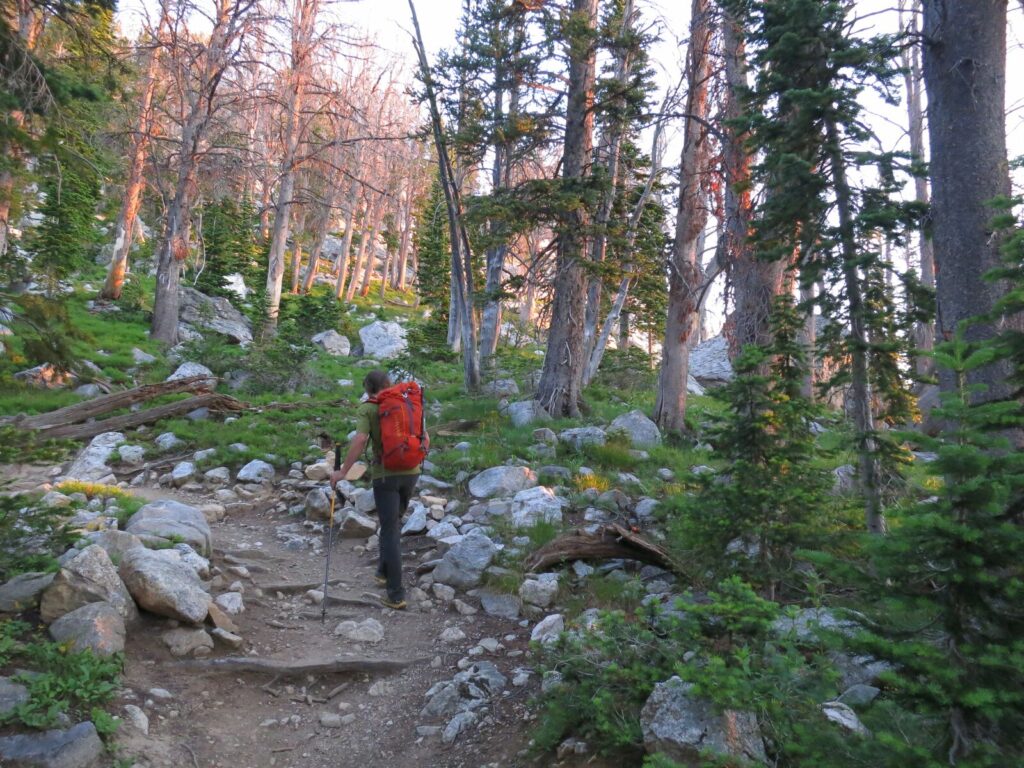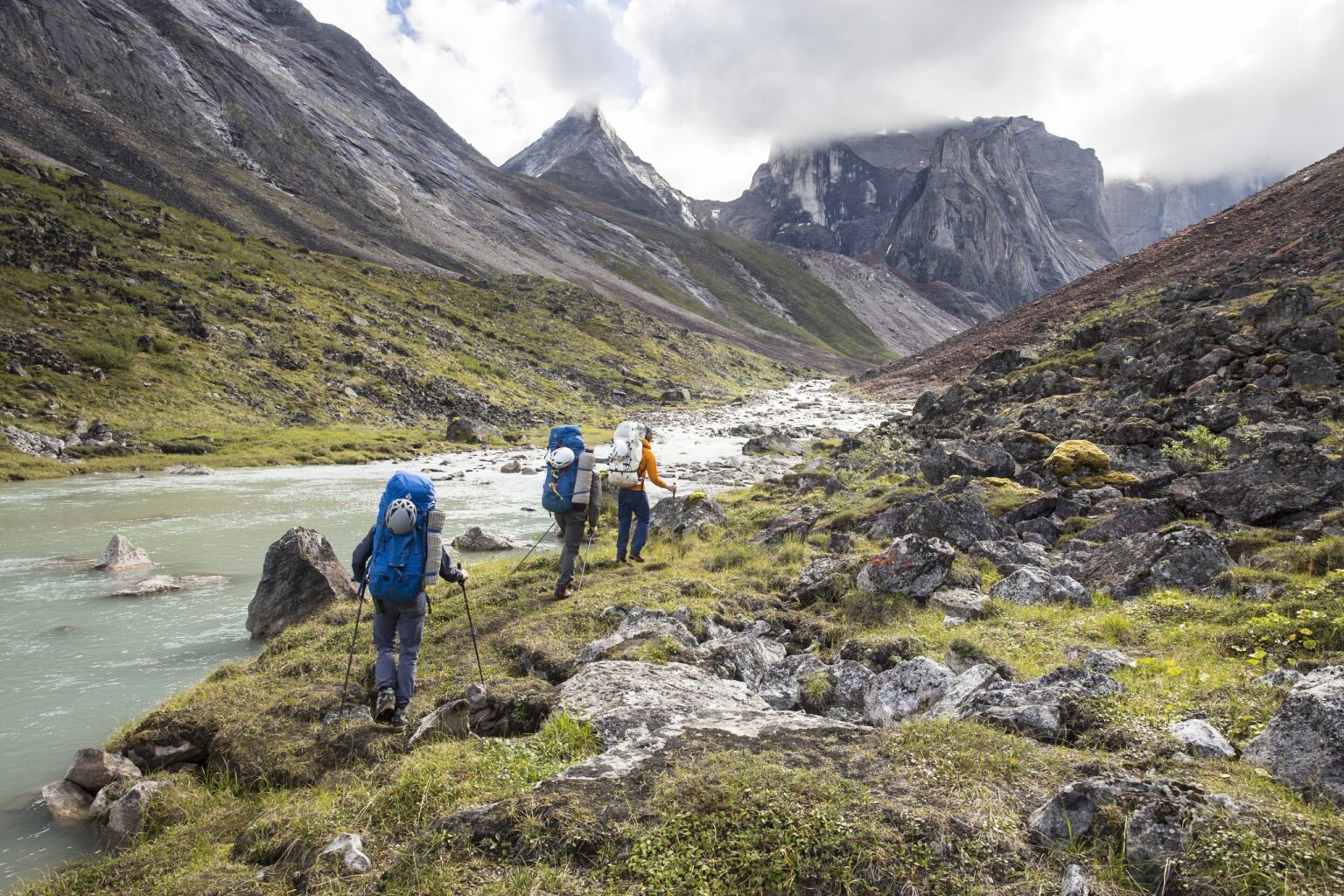Whether you’re planning a multi-day trek in the Alps, trekking to Everest Basecamp, or setting out to complete your first thru-hike, the training fundamentals for trekking are universal. While mountaineering may involve technical climbing and high-altitude conditions, trekking places a different—yet still very demanding—set of physical and mental challenges on your body.
In this article, I’m sharing what we’ve learned from years of coaching athletes for athletes preparing for hiking and trekking objectives. The goal is to give you clear, practical tips supported by the science of endurance performance so that you can hit the trail feeling stronger, more resilient, and more confident.
The Hiker as Athlete
Trekking demands hours—or days—of continuous effort on your feet, often with a loaded pack and over challenging terrain. If you’re not well-prepared, the impacts of fatigue, joint stress, altitude and weather can hit even harder.
As with any endurance sport, success starts with fitness. The more robust your aerobic base and the more resilient your muscles are, the more enjoyable (and safe) your experience will be. Your training should prepare you to move efficiently over long distances, carry weight comfortably, and recover well from back-to-back days on the trail.
The Building Blocks of Trekking Fitness
Training for hiking and trekking should focus on on four key elements:
- Aerobic capacity: for the ability to move efficiently for hours at a time.
- Muscular endurance: to give your muscles (particularly your legs and core) the ability to keep working for hours of steady climbing and descending with a heavy pack.
- Strength: to meet the physical demands of carrying a backpack and protecting joints over uneven terrain
- Technique and form: to move efficiently in order to delay fatigue and prevent injury.
Just like preparing for any other endurance sport, it helps to train each of these individually at first. Once you’ve built a solid foundation across the four areas, you can start combining them for workouts that match the goals and specific demands of your trek.
General vs. Specific Training
General training includes gym-based strength training, hiking with no weight, and low-intensity aerobic work. This lays the foundation and helps you build your engine and prevent injury.
Specific training mimics your trekking objective. It includes hiking on similar terrain, for similar durations, with similar gear. The more closely your training reflects your planned adventure, the more prepared you’ll be.

Aerobic Base: Your Trekking Engine
Trekking is all about steady, all-day movement. Whether you’re climbing up to a high pass, hiking to a hut, or logging big miles, you’ll be on your feet for hours at a time- so it’s important to train for that kind of effort. Focus on longer duration, low-to-moderate intensity training sessions to build an aerobic engine that allows you to keep going strong, hour after hour and day after day.
Our recommendation: Aim for four aerobic workouts per week, gradually increasing their duration. The longest of these should make up around 50% of your total weekly training time.
You can use heart rate training zones or RPE (or both) to guide your intensity. To personalize your training, start by assessing your Aerobic Threshold (AeT)—the highest heart rate at which your body is operating aerobically. You can read about how to define your training zones using the heart rate drift test, or watch a video tutorial.
Choosing the Right Workouts
The best training for trekking is… hiking. But if you’re not near the mountains, incline treadmills and stair machines are excellent substitutes. One simple at-home alternative is using a sturdy step-up box or the stairs in the nearest tall building.
Once you’re comfortable moving uphill without any extra weight, work up to hiking or climbing stairs with a loaded backpack. Start with a comfortable weight and then gradually increase to a max of 20% of your body weight or up to the maximum weight you will carry on your trek. If you are newer to backpacking, we suggest working with 10-15% less than you expect to carry on your trek to avoid injury. Here’s a sample backpack progression:
- Weeks 1–4: Bodyweight only
- Weeks 5–6: Add 5% body weight
- Weeks 7–8: Add 10% body weight
- Weeks 9–10: Add 15–20% body weight
Heavier packs should be reserved for experienced hikers or those with larger frames. Remember: more isn’t better if it increases injury risk.
Strength Training for Hikers
Strength is a key ingredient for endurance and injury prevention out on the trails. With a strong lower body and core, you will be able to carry your pack with less effort, manage steep descents with confidence, and keep good, efficient form day in and day out. A hiking-specific strength plan will:
- Build durability to prevent injury
- Improve stride economy and posture
- Increase pack-carrying comfort
We recommend two strength sessions per week during base training. Focus on compound movements like step-ups, lunges, deadlifts, and planks. The classic strength movements are classics for a reason, so there’s no need to get fancy. As your trek approaches, shift to more trail-specific movements using pack weight and uneven surfaces.
Training Volume and Timeline
Training frequency matters more than intensity. Spread your training over six days per week: 4 days aerobic base (Zone 1–2), 2 days strength, and 1 full rest day.
Start with 5–8 hours of training per week. You will want to increase your training load gradually, building up to 10-12+ hours per week for more demanding treks.
You should plan on a minimum of 16-24 weeks of training for optimal preparation, but the bare minimum to prepare would be 8 weeks.
The longer your build up, the stronger and more fatigue-resistant you’ll be. Remember that we can only gain fitness at a set rate with optimal training. There are no (effective) short-cuts! The more out-of-shape you are now, the earlier you should get started. If you need accountability, you may want to invest in a personal coach.
Easy Weeks and Modulation
Tapering Before Your Trek
In the final 1–2 weeks before your hike, reduce training volume but maintain the intensity. Your body needs time to recover and consolidate fitness.
Here’s an example taper week:
- 1 Zone 1 hike (~25% of weekly volume)
- 1 Zone 2 aerobic workout (~10%)
- Fill remaining time with easy walks and recovery activity
- 2 strength sessions (50% of previous load)
Mental Preparation
Long hikes test your mind as well as your body. You can work on building mental resilience by:
- Training consistently, even when motivation is low
- Doing occasional long efforts in poor conditions
- Practicing self-care on the trail (food, hydration, pacing)
True confidence comes from putting in the work. When you train both your body and your mind, you will be ready to handle whatever the trail throws your way.
Final thoughts
There’s no shortcut to preparing for any big adventure, but with consistent, structured training focused on endurance, strength, and real-world specificity, you’ll build the fitness, confidence, and resilience to enjoy your adventure, wherever the trail takes you.
If doing it by yourself feels overwhelming, you might like to try one of our training plans or schedule a call with a coach.

